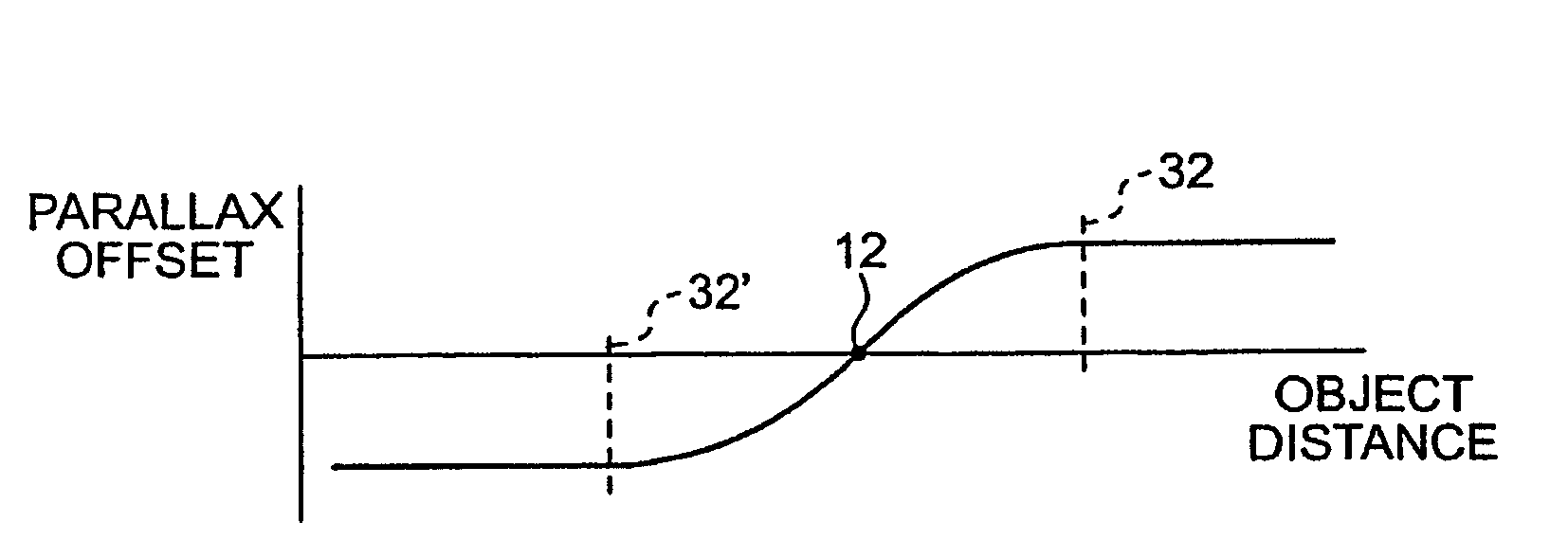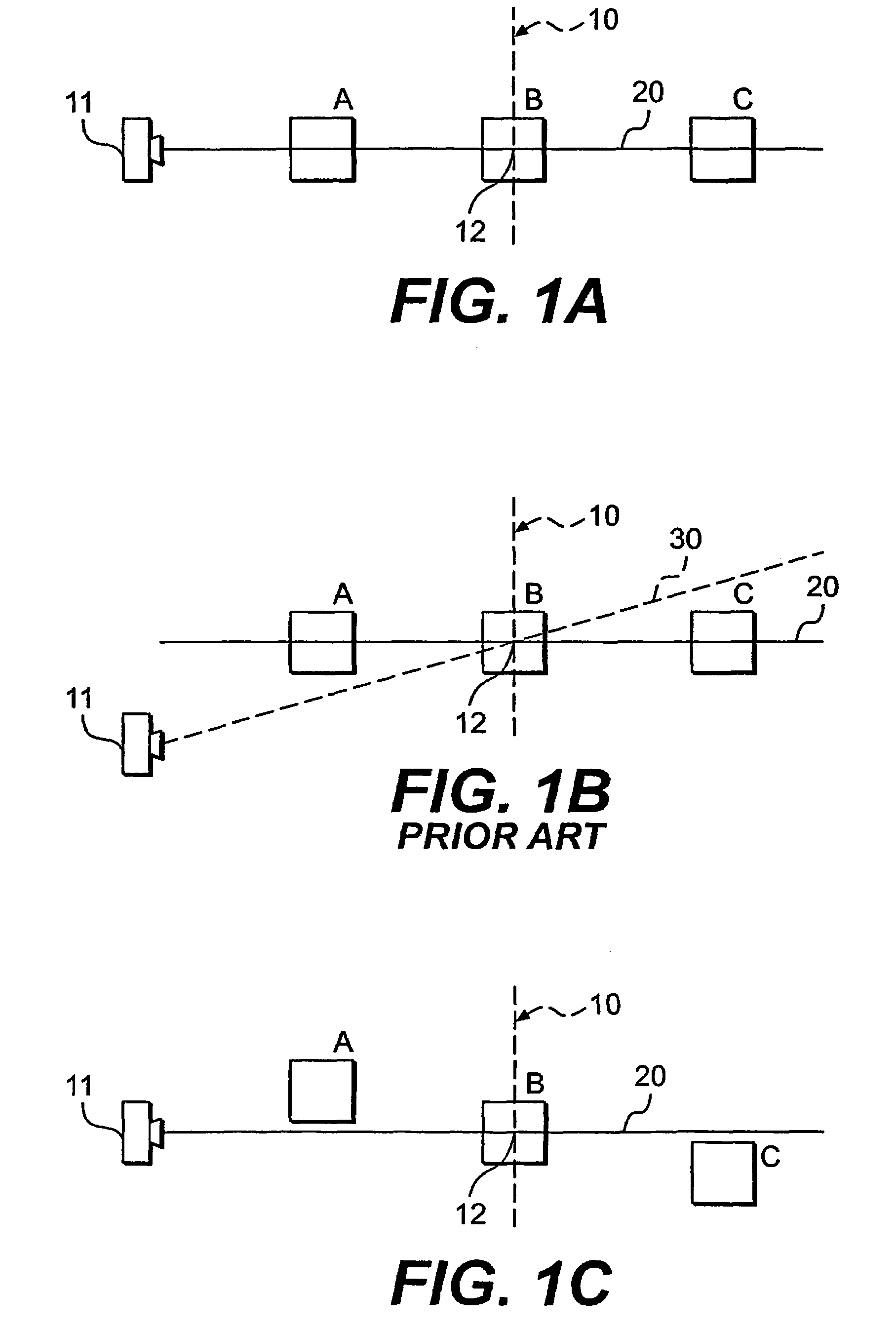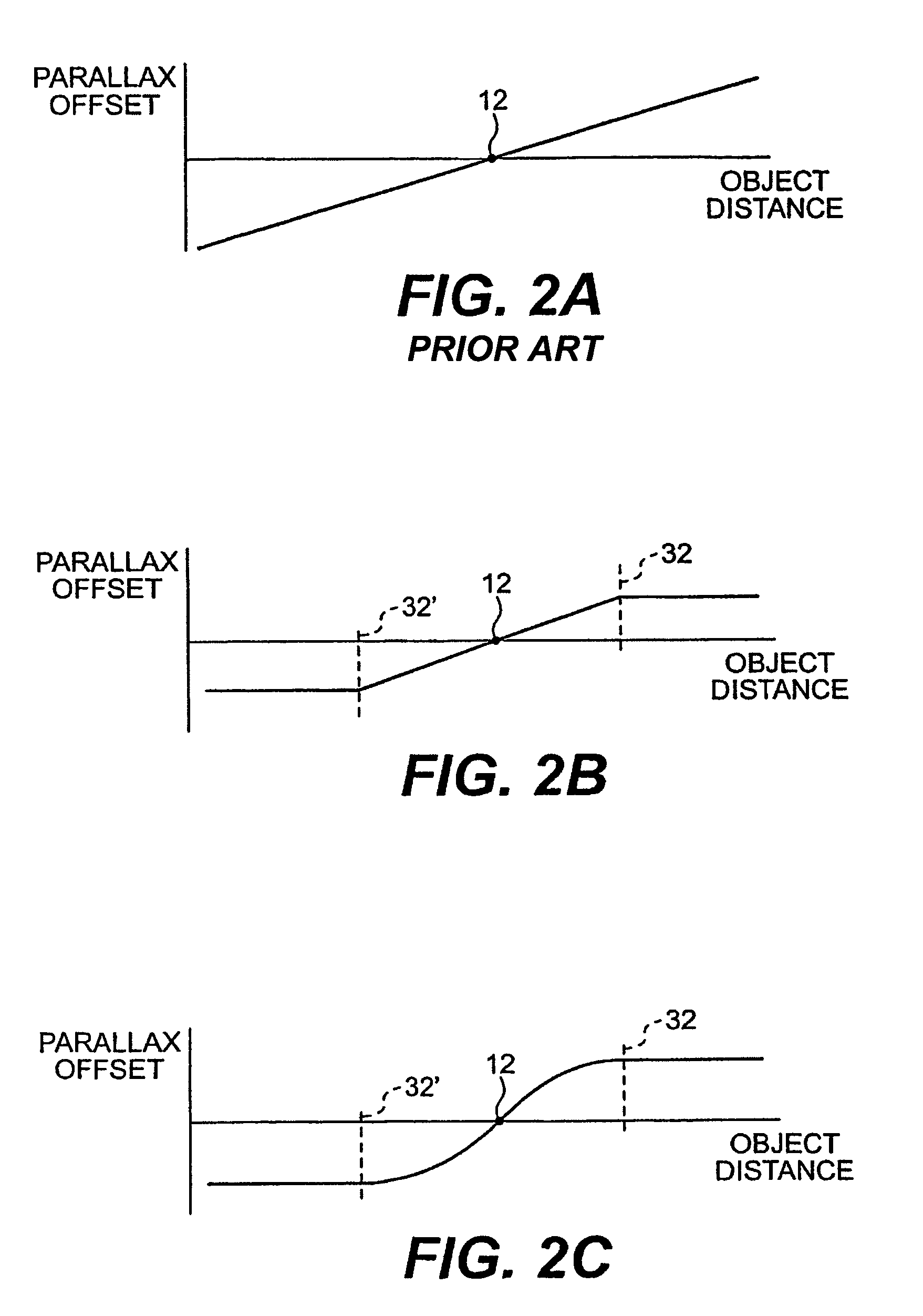Parallax scanning through scene object position manipulation
a parallax scanning and scene object technology, applied in the visual arts, can solve the problems of large amount of computation, heavy processing resource burden, and nevertheless two-dimensionality
- Summary
- Abstract
- Description
- Claims
- Application Information
AI Technical Summary
Problems solved by technology
Method used
Image
Examples
Embodiment Construction
[0024]The present invention includes a system and method for using parallax scanning to generate and display autostereoscopic 3D computer graphics images. That is, by incorporating parallax information into computer graphics images, these images may be perceived as having three dimensional characteristics. The invention improves on the prior art methods in at least two ways. First, automatic scan control algorithms calculate the proper parallax scan parameters based on the 3D virtual scene information. Second, instead of applying parallax scanning to a 3D virtual scene by moving a camera and holding scene geometry fixed, the method of the present invention applies parallax scanning to the scene by holding the camera fixed and moving the scene objects.
[0025]Previous parallax scanning methods as applied to computer imaging incorporated parallax information into scene images by moving the iris of the camera with respect to the scene objects being imaged. The present invention reverses ...
PUM
 Login to View More
Login to View More Abstract
Description
Claims
Application Information
 Login to View More
Login to View More - R&D
- Intellectual Property
- Life Sciences
- Materials
- Tech Scout
- Unparalleled Data Quality
- Higher Quality Content
- 60% Fewer Hallucinations
Browse by: Latest US Patents, China's latest patents, Technical Efficacy Thesaurus, Application Domain, Technology Topic, Popular Technical Reports.
© 2025 PatSnap. All rights reserved.Legal|Privacy policy|Modern Slavery Act Transparency Statement|Sitemap|About US| Contact US: help@patsnap.com



